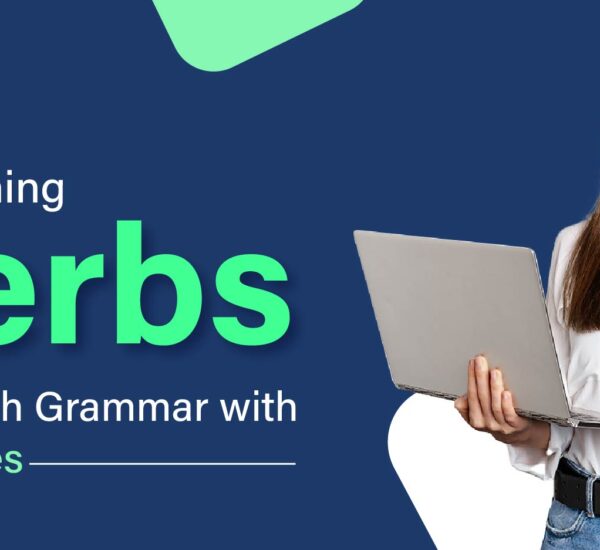In English grammar, there are 14 different and varied punctuation marks. Period, apostrophe, question mark, semicolon, brackets, exclamation point, comma, dash, hyphen, quotation mark, colon, braces, parentheses, and ellipsis are all examples of punctuation marks.
You should know what each one is and how to use it if you want to make your writing easier to read and look more professional.
Don’t worry; we’ll break down each punctuation mark and show you how to use it correctly.
Also Read: How Can You Improve Your Vocabulary by Playing Games? Top Games & Apps
Punctuation in English Grammar
Capital letters and full stops, commas, question marks, exclamation marks, colons and semicolons, and quotation marks are the most common punctuation marks in English.
We use pauses and the pitch of our voice to make what we say more clear when we speak. Punctuation in writing serves a similar purpose, making it easier to read.
Punctuation is made up of rules as well as conventions. Punctuation rules must be followed, but there are also punctuation conventions that give writers more flexibility.
Punctuation Definition
Punctuation is the division of written words into clauses and sentences using symbols such as full stops or commas, periods, or question marks.
Punctuation rules change with register, language, location, and time, and they’re always changing. Certain aspects of punctuation, such as those used in text messages and online chat, are stylistic and thus the tachygraphy (shorthand) or author’s (or editor’s) choice, language forms.
Punctuation Rules
End Punctuation Mark
Rule 1: At the end of a declarative sentence, use a period. (statement)
Rule 2: At the end of an imperative sentence, use a period. (command)
Rule 3: End the interrogative sentence with a question mark. (question)
Rule 4: At the end of an exclamatory sentence, use an exclamation point. (a strong impression)
Rule 5: End an interjection with an exclamation point. (one or two words/strong emotion)
Comma
Point 1: When there are three or more items in a series, use commas to separate them.
Point 2: After an introductory word, use a comma to indicate a pause.
Point 3: After two or more prepositional phrases at the start of a sentence, use a comma.
Point 4: Use commas to separate words in a sentence that interrupt the flow of thought.
Point 5: In direct address, use commas to separate names.
Point 6: When joining simple sentences into a compound sentence, use a comma before and or, or but.
Point 7: Use a comma after a friendly letter’s salutation and after both a friendly letter and a business letter’s closing.
Also Read: Use of Games to Improve English Vocabulary: Let’s Learn English Effectively with Fun!
Some More
Point 8: To avoid a misreading, use a comma.
Point 9: When the year is used with both the month and the day, use commas before and after it. If only the month and year or the month and day are given, do not use a comma.
Point 10: When a state or country’s name is used with a city’s name, use commas before or after it. After the state postal abbreviation and the ZIP code, do not use a comma.
Point 11: To set off an abbreviated title or degree after a person’s name, use a comma or a pair of commas.
Point 12: When too means “also,” use a comma or a pair of commas to separate the words.
Point 13: Set off a direct quotation with a comma or a pair of commas.
Semi Colons and Colons
#When a conjunction such as and, but, or is not used, use a semicolon to join parts of a compound sentence. A compound sentence is made up of two or more simple sentences joined by a conjunction.
#When introducing a list of items at the end of a sentence, use a colon. Before the list, use a phrase like these, the following, or as follows.
#When writing the time of day, use a colon to separate the hour from the minute.
#In a business letter, use a colon after the salutation.
Apostrophes and Hyphens
#To make the possessive of a singular noun, use an apostrophe and a –s (‘s).
#To form the possessive of a plural noun that does not end in –s, use an apostrophe and a –s (‘s).
#To make the possessive of a plural noun ending in –s, just use an apostrophe.
#In a contraction, an apostrophe can be used to replace letters that have been omitted. A contraction is a word formed by combining two or more words into one and omitting one or more letters.
#To show the division of a word at the end of a line, use a hyphen. A word should always be divided into syllables.
#In compound numbers, use a hyphen.
#In some compound nouns, a hyphen or hyphens should be used.
Punctuation Marks Types
Period
This is probably the easiest to understand. The period, also known as a full stop, marks the end of a sentence. A complete and declarative sentence is referred to as a full sentence.
Here’s an example of a sentence with a period in the end:
The dog dashed beneath the fence.
Periods can also be found in abbreviations like names and titles.
In abbreviations, here are some examples of how to use a period:
Dr. Ohja examined his patient’s medical records.
Mr. Drake walked into his house and opened the door.
Also Read: What Causes Lack of Good Speaking Skills in Workplaces? Tips to Improve Communication Skills
Question Mark
A question mark can also be used to end a sentence, but only when the sentence is a direct question. What, how, when, where, why, or who is usually the first word in a question sentence.
The following is an example of how to use a question mark in a sentence:
What’s your favourite way to eat eggs?
Why didn’t you enjoy last night’s film?
Exclamation Mark
When a sentence expresses strong emotion, an exclamation point or exclamation mark is also used at the end of the sentence. The expression can be anything from excitement to disgust to anger to joy to anything else. Exclamation points are used to emphasise a point in a sentence.
Here’s an example of how to put one in a sentence:
She yelled, “Look out behind you!”
I’m really looking forward to going to the park tomorrow!
Comma
In a sentence, commas are used to create a pause. The pause can be used for a variety of purposes, including separating phrases, ideas, or even changing the structure of a sentence.
Commas are useful in a variety of situations. For a direct address, commas are used, as in: Jake, it was great to see you again.
They can also be used to divide two complete sentences:
He went to the library, before going out to eat.
In a sentence, commas can also be used to list items: She went shopping and purchased shoes, two shirts, a dress, and a pair of pants.
Colon
There are three main functions of a colon. When introducing something, such as a quote, an example, a series, or an explanation, it can be used in a variety of ways.
Last semester, she took four classes: biology, art, history, and economics.
If the second clause clarifies or completes the first, a colon can be used to connect two independent clauses. They didn’t have time to waste, for example it was already late.
Finally, a colon can be used to emphasise a subject in a sentence: There is only one vegetable that I despise: Brussel sprouts.
Also Read: Types of Adjectives: Start and Build the Foundation of Grammar Through the Easy Way
Semicolon
A semicolon connects two independent clauses in the same way that a colon does. In this case, however, the clauses are more closely related than when a colon is used. Consider the following scenario:
I have a conference in the morning, so I won’t be able to go out tonight.
Both clauses are complete sentences in and of themselves, but instead of using a period, a semicolon can be used to show that they are connected.
Semicolons are also used in comma-separated lists, which is a less common application. Take a look at:
We visited Rome; London, Paris, France; England, Italy, and Athens, Greece last summer.
Hyphen
A hyphen, not to be confused with a dash, is used to connect two or more words in compound words. Here are some hyphenated word examples:
Step-by-step
Mother-in-law
Ex-boyfriend
Brackets
Brackets are used to denote clarification, technical terms, and explanations. When quoting another person or text, it can also be used to clarify a subject. Consider the following scenario:
Mrs Smith agrees that cats are preferable to dogs.
“[Summer] is my favourite time of year,” August said.
Apostrophes
Apostrophes are used to indicate the absence of a letter or letters, as well as the possessive or contractions. Lowercase letters can also be pluralized with it. Some examples are as follows:
It’s been 6 months since I started working from home, and it’s been fantastic.
Rebecca’s dog underwent surgery the day before yesterday.
Conclusion
You’ll be a much stronger overall writer now that you understand what the 14 punctuation marks, it’s the definition and some rules are and how to use them. If you’re a student who needs extra help with grammar or punctuation, your school can always assist you.
Our student support advisors at Fluent Life can assist you with a variety of issues, including writing and grammar.
You also have the choice to download the Fluent Life app on your mobile phone for customized personal lectures where you get instant feedback on your performance and can resolve all your queries.
Also Read: Kinds of Adverbs: Check Out the Knowledge of the Most Useful English Concept!






